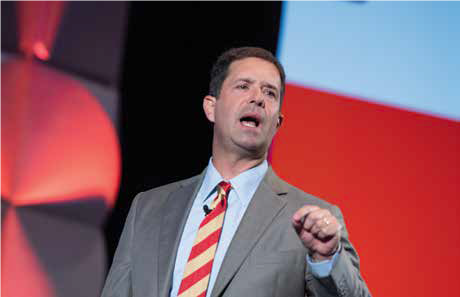Four distinct generations—matures, baby boomers, Gen Xers, and millennials—own homes in community associations and are in today’s workforce. The mix of characteristics and diverse workstyles of these generations has the potential to lead to miscommunication and discord. It’s little wonder board members and managers are looking for guidance on how to create more compatible and efficient living, governing, and working environments.
An acclaimed expert on generational differences, Cam Marston provided some of that guidance in a presentation during CAI’s 2018 Annual Conference and Exposition in May.
Marston, the author of Generational Insights, identifies clear behaviors in each demographic.
The matures (also known as the silent generation; born between 1928 and 1945) and baby boomers (born between 1946 and 1964), for instance, favor collaboration, teamwork, and hierarchy. They tend to arrive early, stay late, and embrace plenty of meetings.
Gen Xers (born between 1965 and 1980) are independent and self-sufficient. They are also technologically adept and well-educated. Because of their independence and resourcefulness, Gen Xers believe the best way to manage people is to get out of the way and have as little contact as possible.
Millennials (born between 1981 and 1996) are multitaskers and comfortable with both group and individual interaction. They are generally adept at social media and prefer to text than call or email, Marston says. Like their baby boomer parents, the millennials embrace teamwork and like building relationships. However, unlike the boomers, millennials value work-life balance over career.
Marston believes the biggest leadership gap is with the Gen Xers. Their “reluctance to get involved” can get in their way of being strong, effective managers, he says. Yet they need to start getting a handle on the millennials. “As a group, the millennials are like a huge boulder barreling down hill, and the Gen Xers need to learn how to engage now to be able to guide and lead these workers in the future,” he says.
Those who want to create high-performance workplaces, whether within a management company or an association board, should learn “to recognize their own inherent workstyles as well as those of their colleagues” and then set their own workstyle aside, Marston says. Doing so demonstrates an understanding of generational differences and motives that can help people connect with each other.
Marston recommends treating colleagues at work or peers on boards as if they were people from another country or culture. Making one change in how you interact with each other could lead to better relationships. “Usually, one change creates momentum,” he says.
And before you get too comfortable with these four generations, the iGen is on its way. Individuals born after 1997 will be joining the workforce in large numbers and could become homeowners in a few years.


